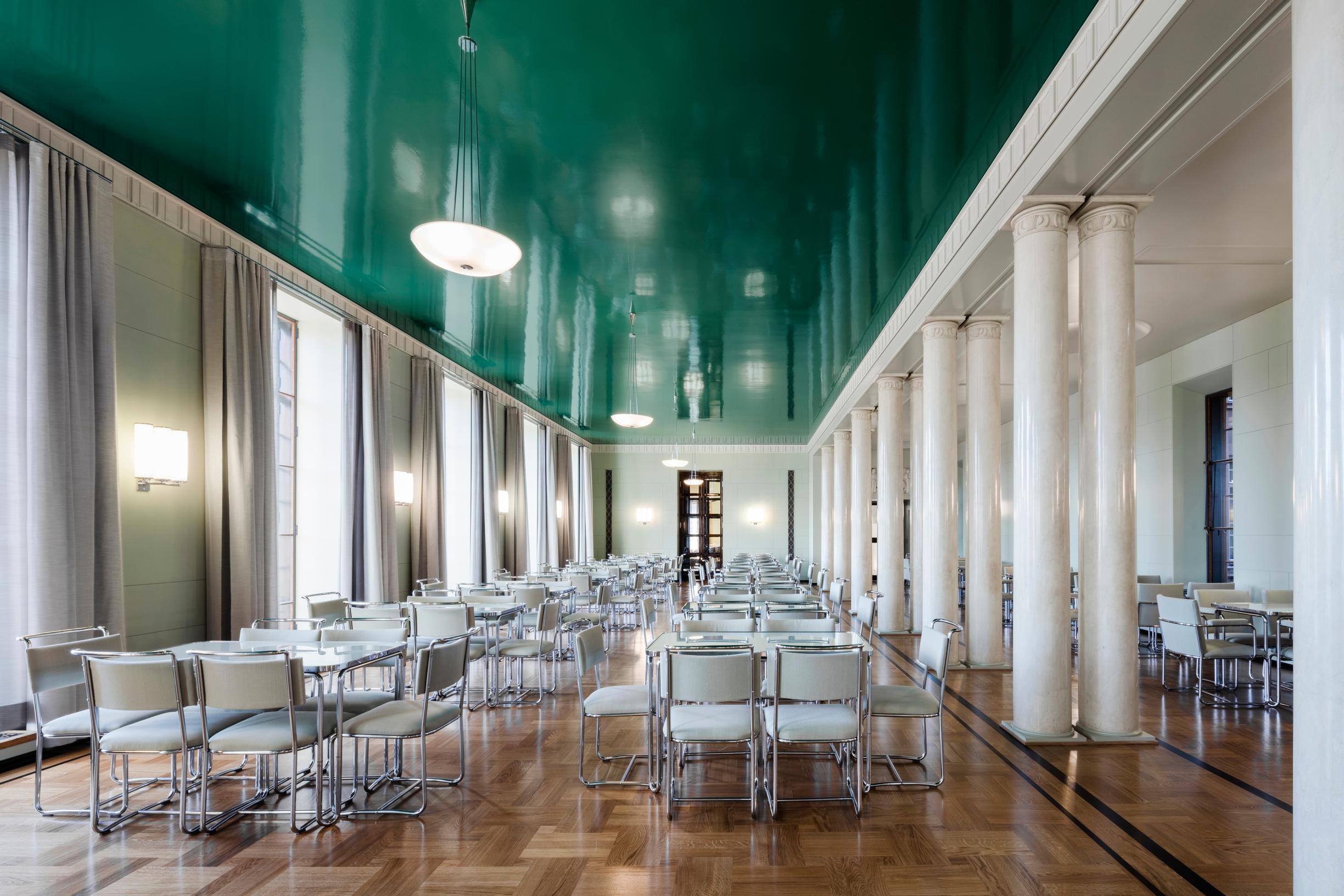
Color inspiration from the cradle of power: turquoise ceilings and bold art deco style in the Finnish Parliament Building
How about decorating your home in the style of the Finnish Parliament Building? The aesthetics of the era as well as natural materials, with their distinctive shades, guided the color choices of J. S. Sirén, the building’s architect. Thanks to the renovation, the delightful colors can once again shine in all their glory.
In the Finnish Parliament Building’s Hall of State, the stone floor gleams, chandeliers sparkle, and tall doors frame visitors as they come and go. This grand stage of power was designed by architect J. S. Sirén. Completed in 1931, the Parliament Building is his universal artwork.
The book Eduskuntatalo—Peruskorjaus 2014–2017 (“Parliament Building - Renovation 2014-2017”) describes Sirén’s vision for the Hall of State. The architect described it as harmonized in various shades and values of pale gray and greenish, with yellowish and light brown appearing here and there. He noted the subdued color palette and the proportions of the room would serve as a fine backdrop for the splendor of gala gowns.
The architectural office Pekka Helin & Co served as principal, architectural, and interior designer for the extensive renovation. The biggest challenge was integrating modern technology seamlessly into this protected national monument.
“At the start of the project, the design team half-jokingly set a goal that once the renovation was complete, it would look as though nothing had been done,” writes chief designer Peter Verhe.

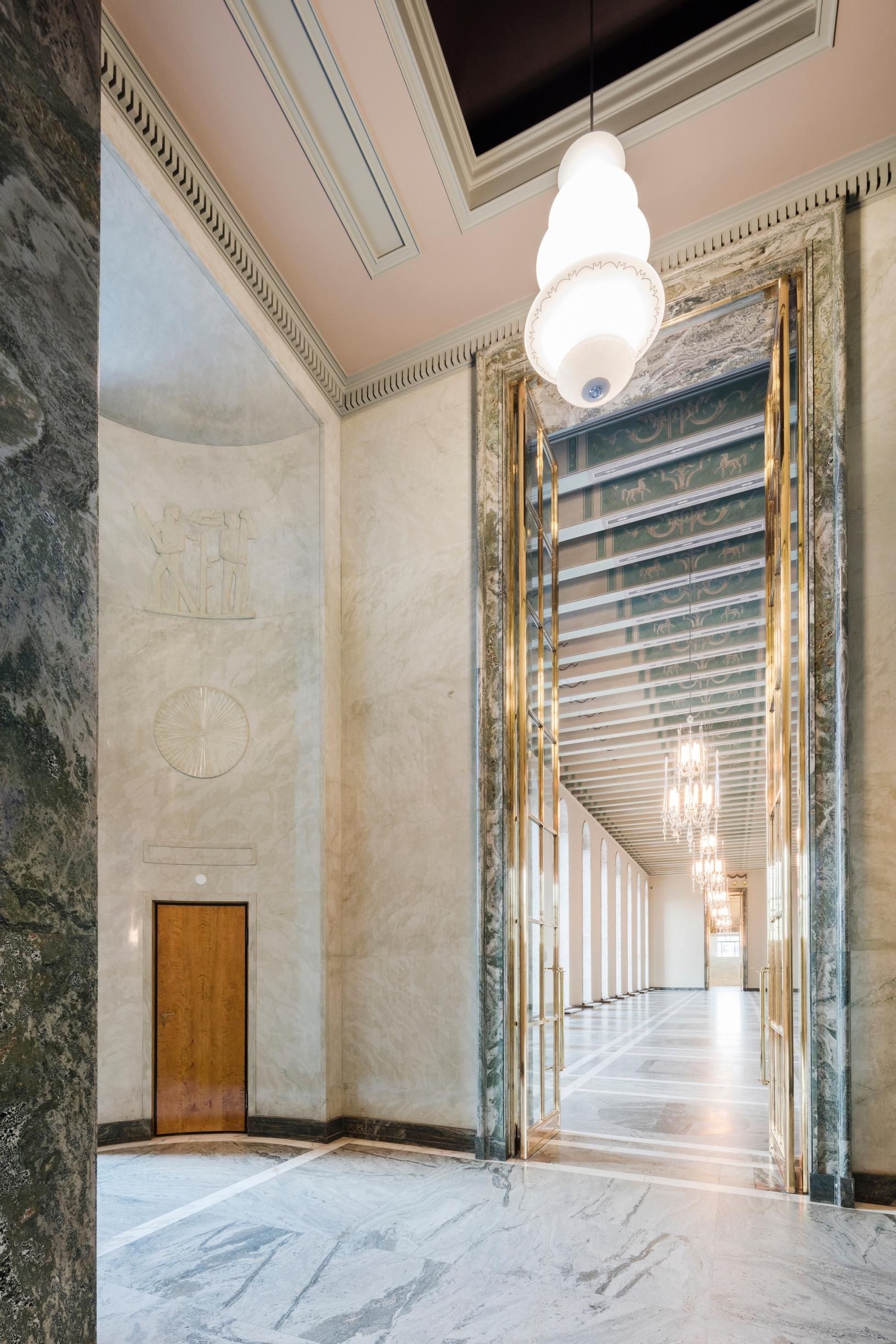
Recapturing architect J. S. Sirén’s bright and refined color palette was a major undertaking.
The spaces look as if nothing changed, yet they appear significantly fresher, says the Parliament Building’s senior curator Liisa Lindgren.
Every surface was scrutinized: cleaned, conserved, or, where necessary, repaired or replaced. The goal was to preserve Sirén’s intended look while honoring the building’s long history. Not everything that had changed over time was returned to its original state.
“The upholstery on the seats in the Hall of State retained textiles designed by Irma Kukkasjärvi in the 1980s renovation. In other spaces, we also kept Kukkasjärvi’s upholstery fabrics,” Lindgren notes as an example.
Tracing the original colors
The Parliament Building’s rooms follow a clear hierarchy, with more prestigious spaces looking more elaborate. That hierarchy is evident in the materials, colors, and decorative details. In the impressive Hall of State, Sirén chose natural stone as the basis for the design:
“The hall’s color palette—from Bruno Tuukkanen’s ceiling paintings and the furniture upholstery to the vestibules’ stucco marble walls—echoes the shades of the Kolmården stone floor,” Lindgren explains.
Architect Peter Verhe describes Sirén’s color palette as bright and refined, noting that recapturing it was a major undertaking.
“Specifying the colors for the Parliament Building’s interiors was one of the most demanding and lengthy tasks of the renovation. In Sirén’s architectural hierarchy, the use of color was a defining element of the spaces and their roles in the overall design,” he writes.
A subtle detail at the edge of a doorway in the Hall of State demonstrates the color research: a portion of painted wall was left exposed, revealing each historical layer of paint.

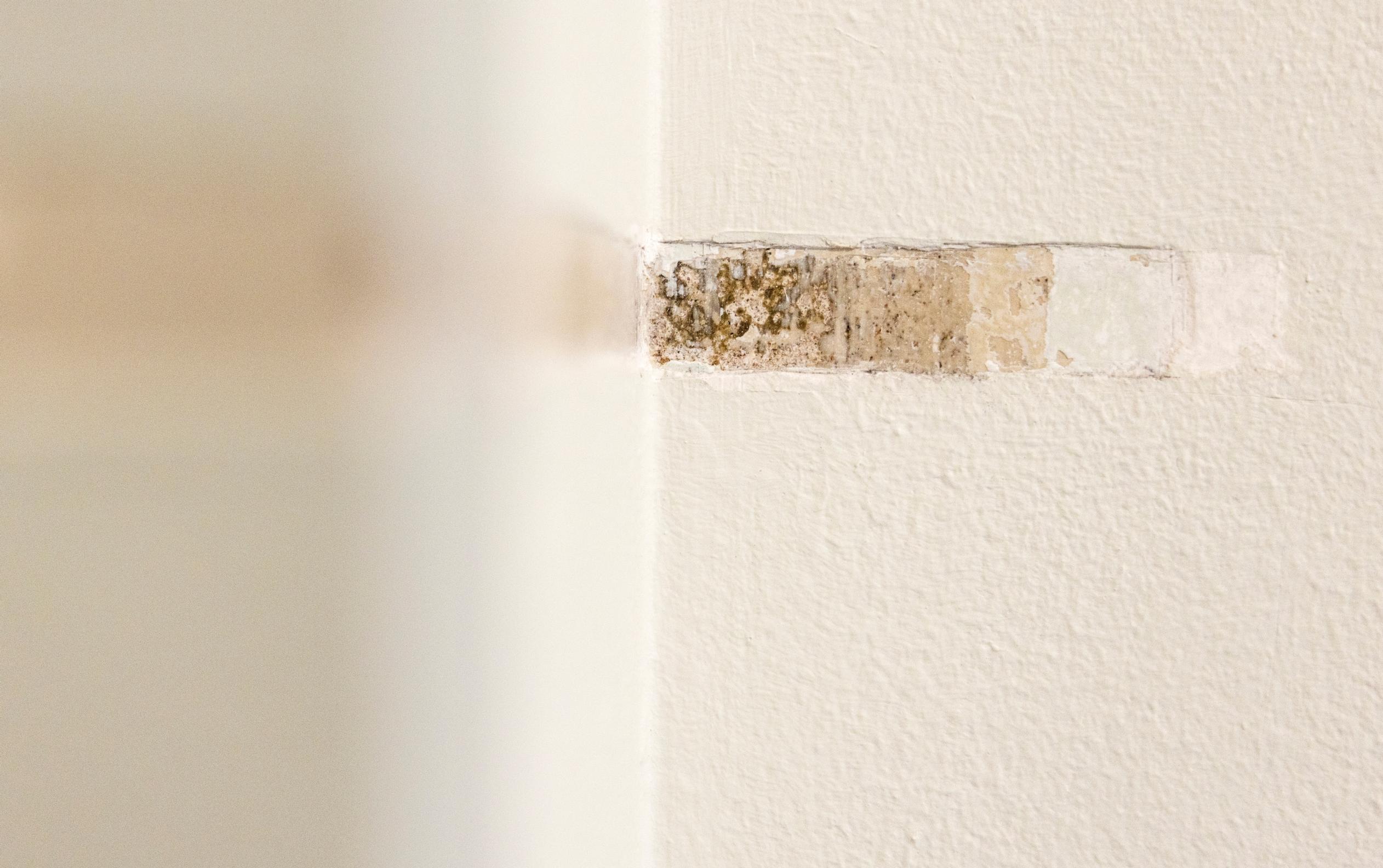
Still, discovering the original colors wasn’t as simple as scraping the walls. Different shades of old lime and oil paints age, yellow, and fade in different ways, so the expertise of conservators was essential for interpreting them. Modern methods were also used to analyze the hues.
No precise information was available in documents either: for example, what exactly did Sirén mean by “greenish”? Old black-and-white photos revealed only the degree of lightness or darkness.
Once the shades were identified, they were tested on-site. Lindgren was part of a large team that toured the Parliament Building’s dim construction site with color and material samples, using an LED light set at 3,000 Kelvin—the chosen color temperature for the building.
Lighting was one of the upgrades. In addition to updating the technology, more light was added. The acoustics also improved, which is why so many press events now take place in the Hall of State, once plagued by echoes.
Sound-dampening structures placed in wall recesses are a great example of a hidden, fully reversible alteration. A key principle of the renovation was that every change should be removable, allowing a return to the original if needed.
Looking up at heavenly ceilings
Shades of green continue in the café. In his own words, Sirén designed the glossy turquoise-green ceiling to blur the room’s relatively low height into a shimmering reflection.
The ceiling paint from the 1970s–80s renovation was preserved because it was in good shape, and modern paints can’t quite replicate the same effect. Protecting the ceiling during the renovation was quite a task.

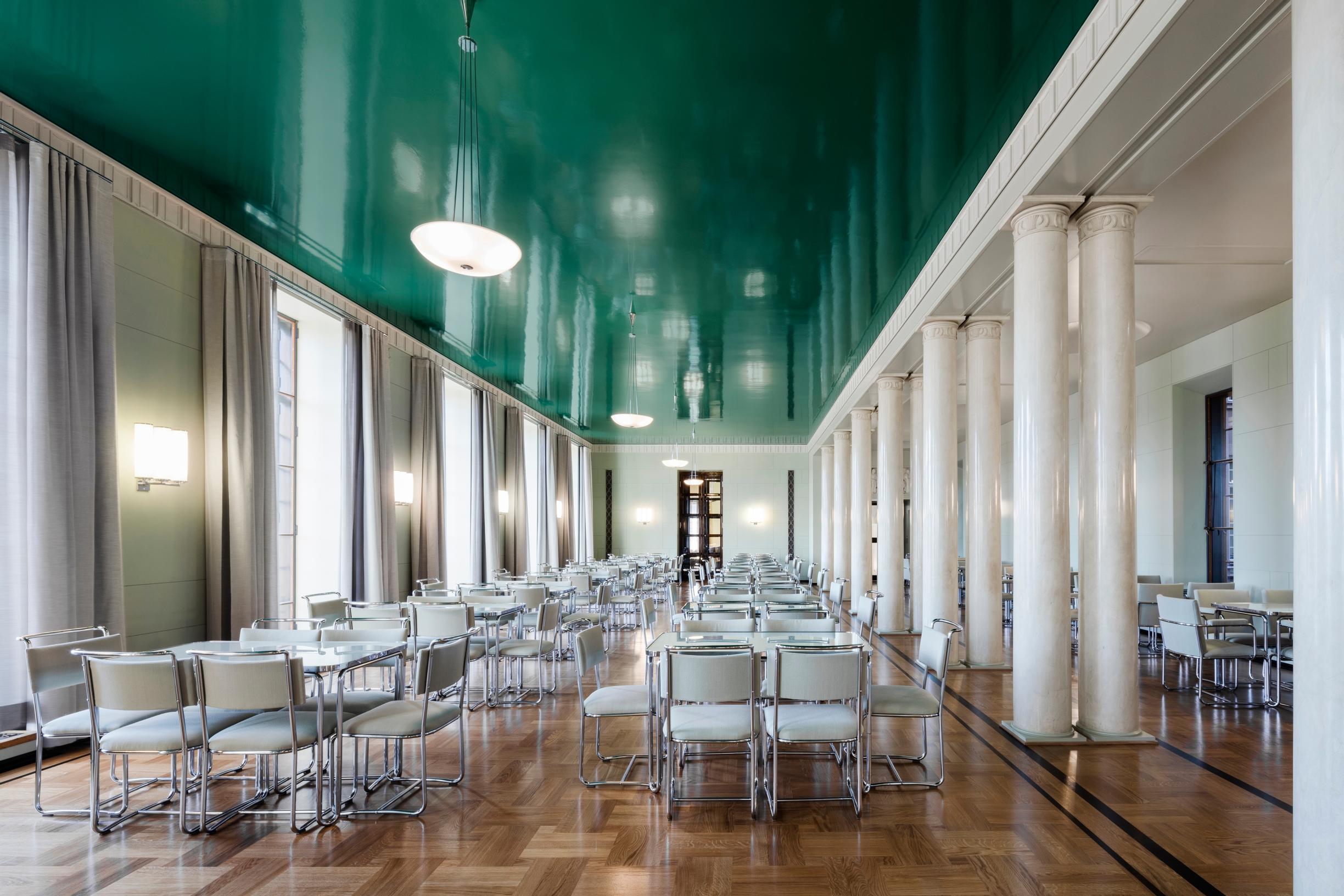

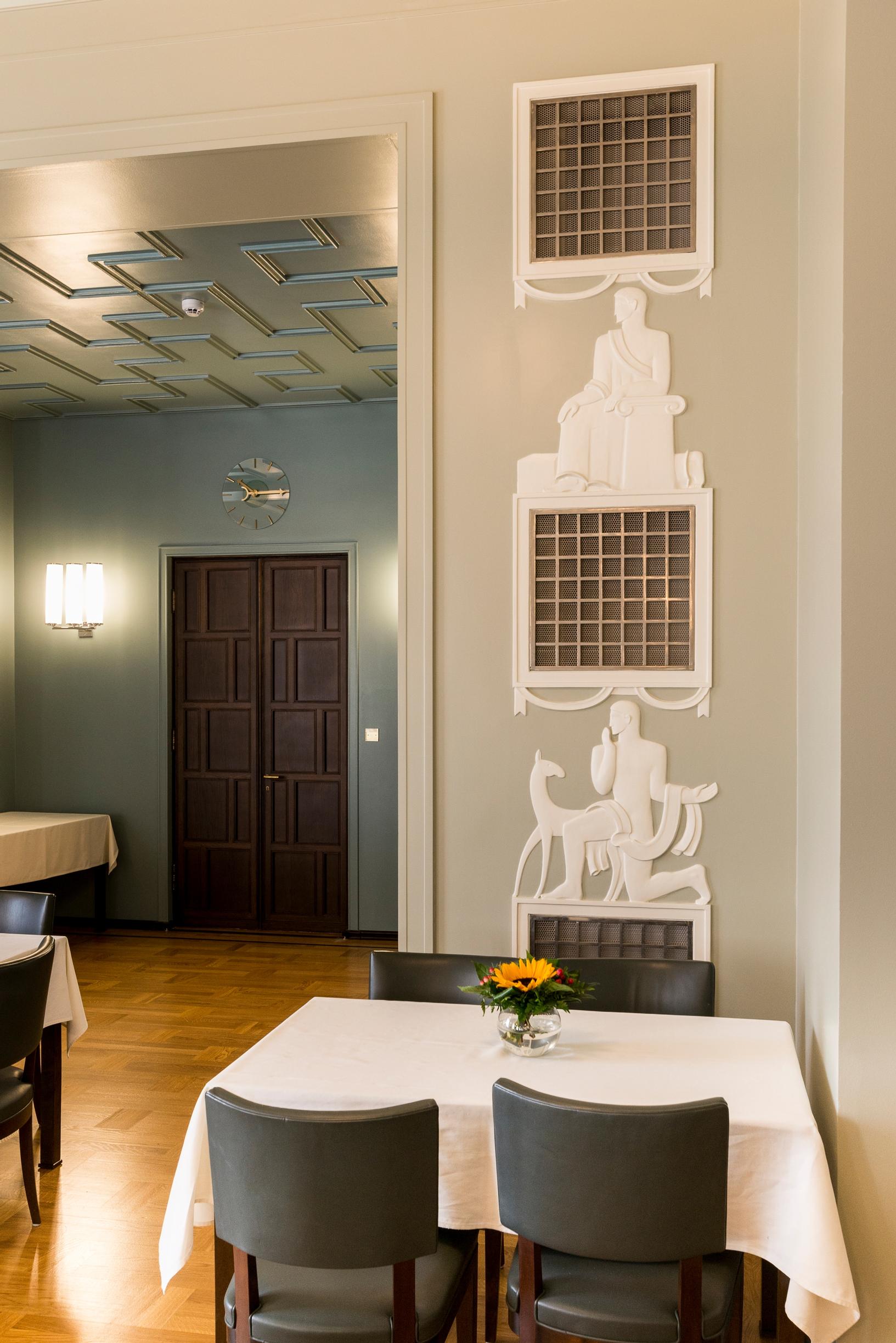
The café’s chairs and tables had been reupholstered many times, so a more durable fabric was specially woven in the shade of the original fabric by Greta Skogster-Lehtinen.
“Werner West’s tubular steel furniture evokes the 1920s urban café culture,” Liisa Lindgren says.
The café’s ceiling frieze is one spot where documents and physical findings conflicted. Documents mentioned silver, but apparently it was never used, and a subtle ivory was chosen in the restoration.
A sugar cane ceiling shines like gold
The best-known space in the building is the Plenary Hall, constantly shown in news broadcasts. It was designed with acoustics in mind from the beginning, guiding the material choices. The lower walls are covered in a blue-gray fabric, while the balcony edges, back wall, and ceiling surfaces are upholstered in pale yellow.
To replace the deteriorated fabric, it was essential to find the correct weaving method, as well as the correct dyeing process to replicate the original color.

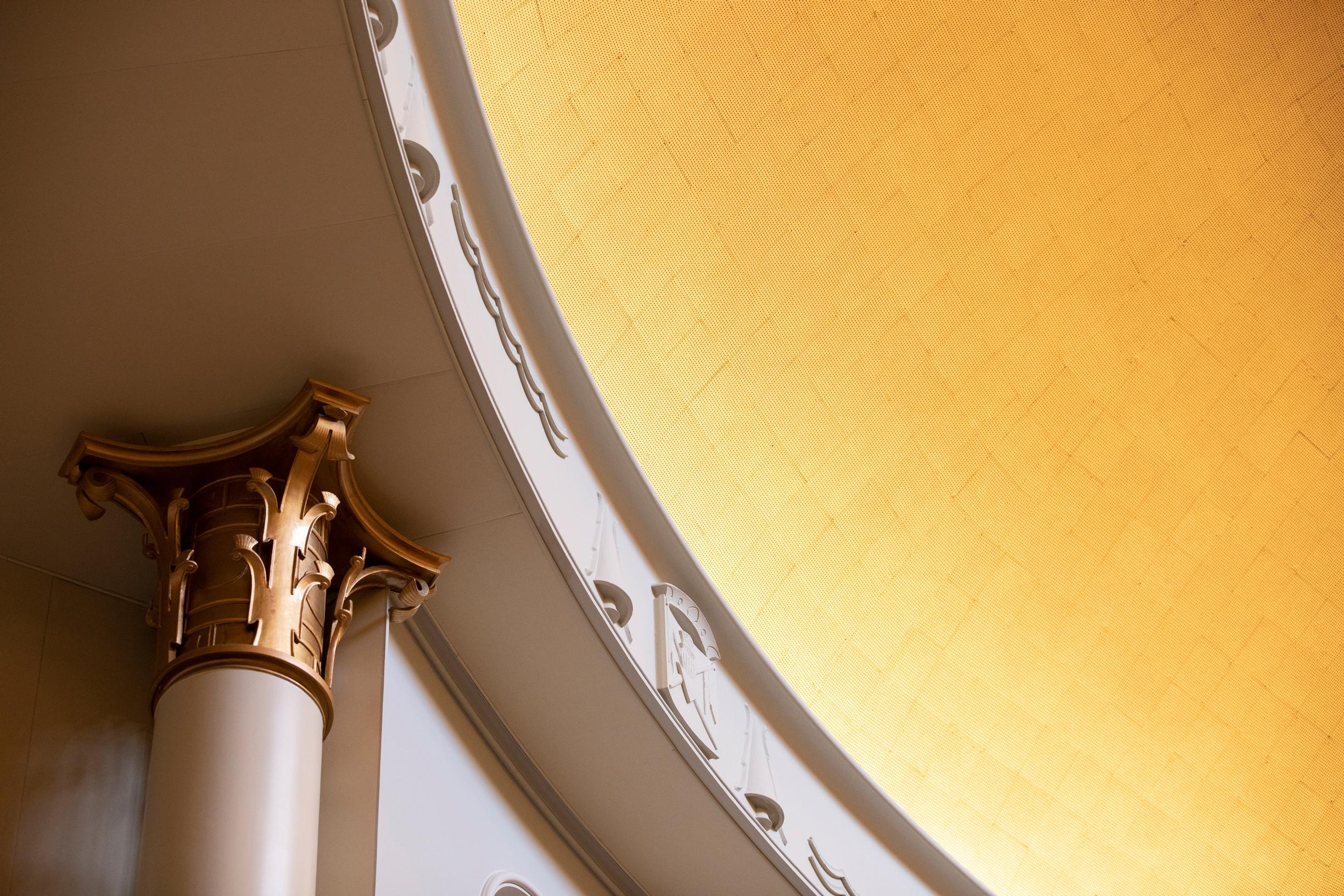
“We were able to match the paint on the ‘yes, no, abstained, absent’ board very closely to the original blue. While dismantling the wall, we found a piece of original fabric folded behind a trim, where the color had been preserved,” Lindgren says.
The floor carpet had taken on a more reddish tone from exposure to light, which became clear when compared to a sample from a collection of the building’s original textiles. A new carpet was woven following Greta Skogster-Lehtinen’s original design.
Fortunately, nearly all the original sugar cane tiles in the golden dome ceiling could be preserved, with only a few needing replacement. Some original tiles were in storage, but they couldn't be used on spots that would be visible, as the natural darkening over time proved impossible to replicate.
“Tiles with similar patina were taken from behind the frieze at the base of the dome. The original product no longer exists, but new tiles were made from a thinner material for the hidden area behind the frieze.
Deep art deco hues
The most intense colors appear in the Government’s Corridor.
“The striking combination of the turquoise rug and the brick-red ceiling reflects the art deco style of the era. Here, J. S. Sirén gave way to Bruno Tuukkanen’s color choices. Tuukkanen would have liked stronger colors in the Hall of State, too,” Lindgren says.
To protect the ceiling, hanging a video projector was not permitted, so a large display screen stands in the room. The hope is that the technology will become less intrusive in the future.

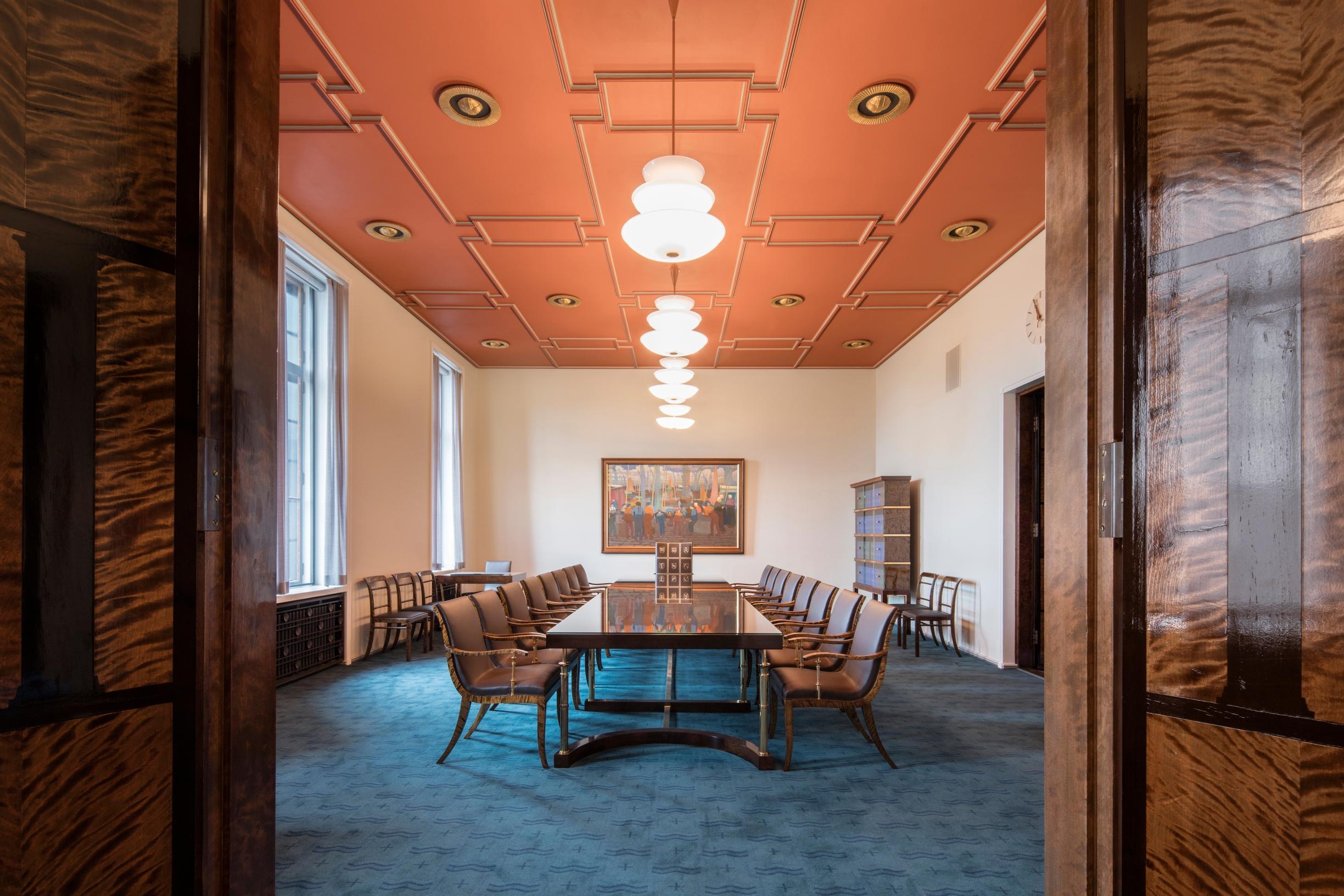
Brick, terracotta, and Italian red also belong to the classicist color family. The Parliament Building is a one-of-a-kind blend of overlapping style trends: in addition to art deco, it showcases 1920s classicism and the emerging functionalism.
Earlier or later, a building like this probably wouldn’t have been created. For instance, the House of the Estates from the late 1800s has a darker, heavier style. Modern buildings, on the other hand, use accent colors very differently from the Parliament Building, where the aim was perfect harmony.
Altogether, nearly 200 different shades were discovered in the Parliament building during the renovation.
The former meeting room of the Grand Committee features colors just as striking as those in the Government's Corridor. Tuukkanen’s ceiling paintings now gleam in turquoise and gold.
“The ceiling was so dirty that the blue and gold of the paintings weren’t really visible. People used to smoke indoors, and city air quality had also had an impact,” Liisa Lindgren notes.
In spring 2023, this meeting room was in the news when newly elected Members of Parliament confirmed their letters of appointment there. No one smokes indoors anymore, but time will continue to take its toll on a building that remains a functional workplace.
Future renovations will find it easier to preserve the colors, as the architects established a color plan based on the NCS color system. Altogether, nearly 200 shades were identified, and though the palette was narrowed somewhat, it’s still wonderfully varied.




